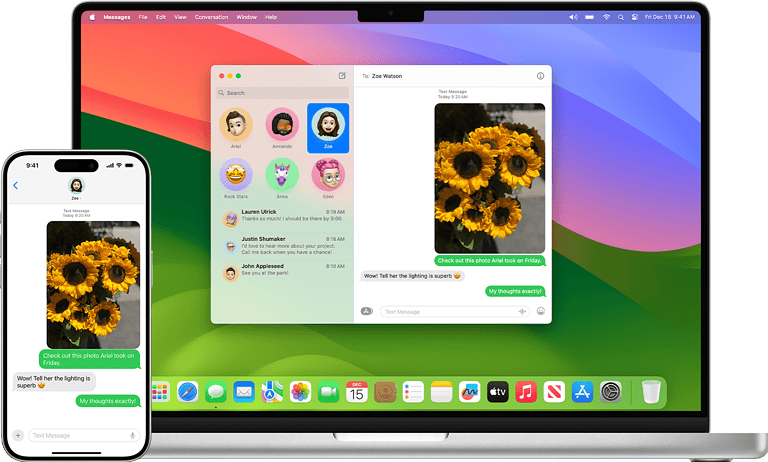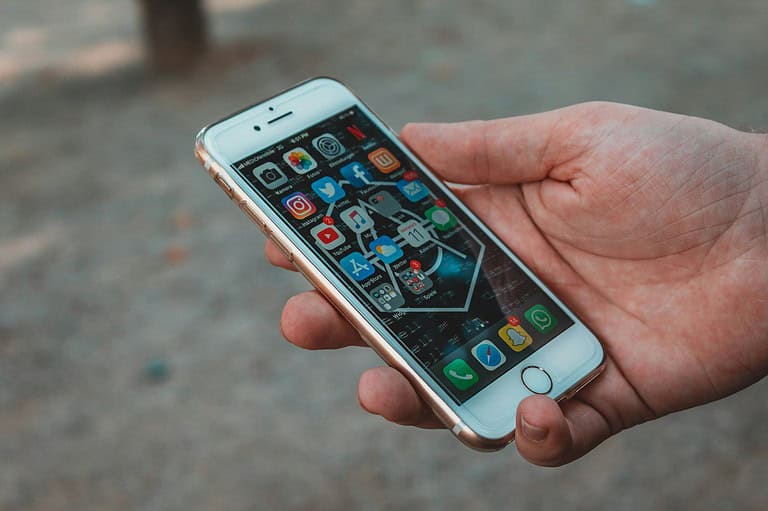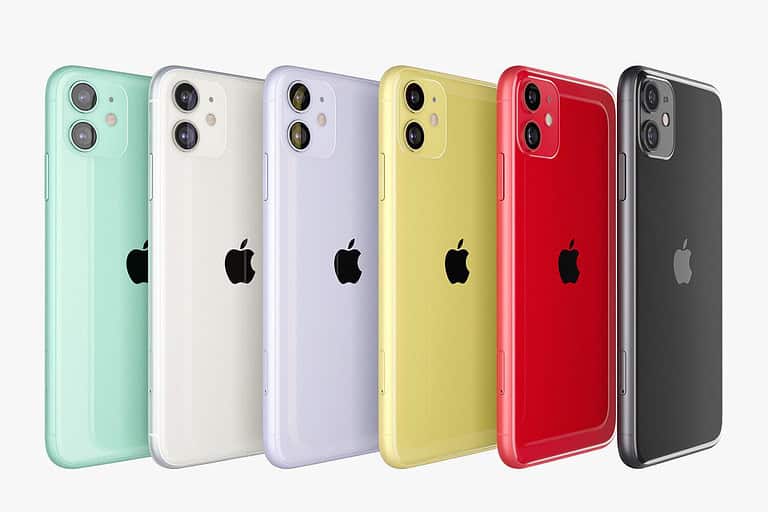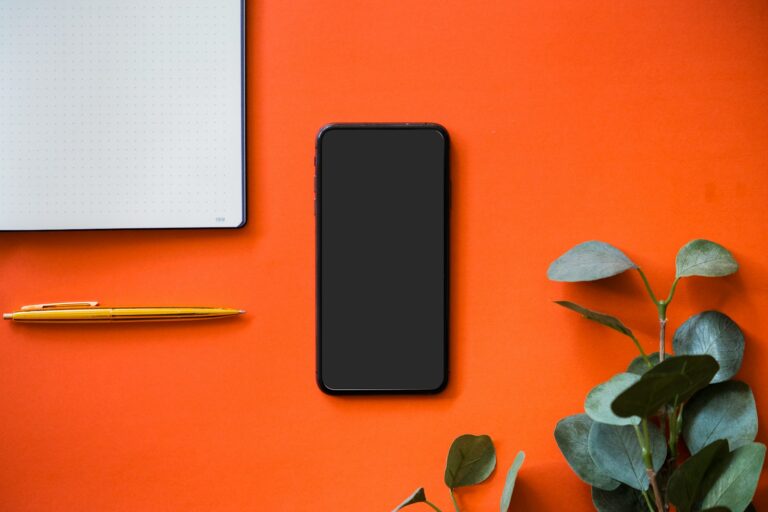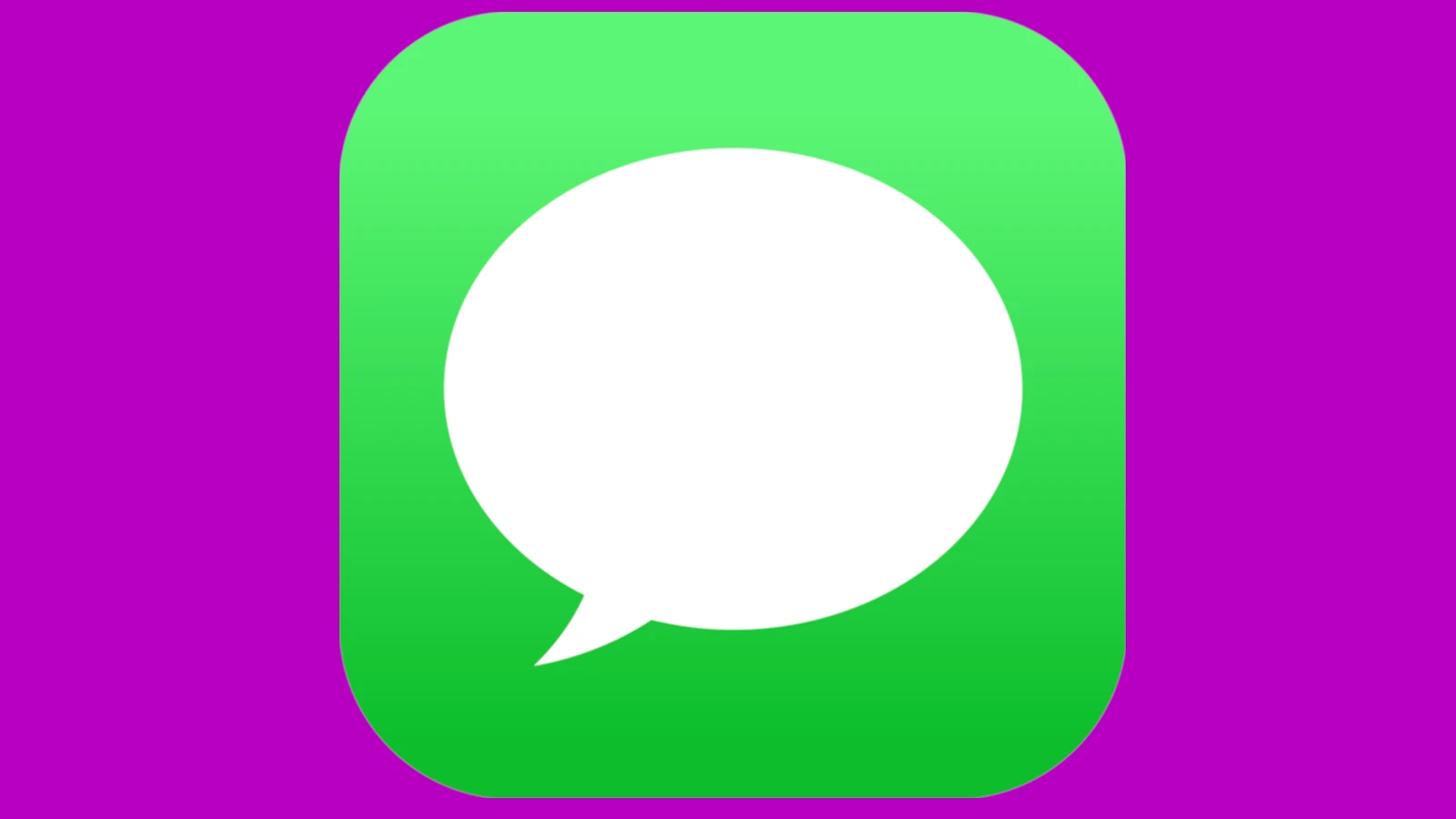
Have you ever tried to send a text from your iPhone to a friend with an Android phone, only to see that frustrating “not delivered” message? This common problem affects many iPhone users and can be incredibly annoying when you’re trying to stay connected. The main reason this happens is because iMessage (Apple’s messaging service) doesn’t work with Android phones, so your iPhone needs to switch to SMS text messaging instead.
Many iPhone owners don’t realize their messaging settings might be preventing texts from reaching Android users. When your iPhone fails to send messages to Android devices, it’s often because the “Send as SMS” option is turned off or there are issues with your network settings. The good news is that these problems can usually be fixed with a few simple changes to your settings.
How To Fix an iPhone That Can’t Send Messages to Android Devices
If your iPhone can’t send text messages to Android users, it’s usually a problem with SMS/MMS settings, carrier issues, or the message format. Here’s how to troubleshoot and fix it step-by-step.
1. Make Sure You’re Sending as SMS, Not iMessage
iPhones use iMessage for Apple-to-Apple communication and SMS/MMS for Android or non-Apple users.
- Go to Settings > Messages.
- Make sure Send as SMS is enabled.
- Also make sure MMS Messaging is turned on (required for group texts and pictures to Android).
- Ensure iMessage is turned on, but note: iMessages only work with Apple devices — Android users need SMS.
2. Check Cellular Network Connection
- SMS/MMS requires a cellular connection, not just Wi-Fi.
- Make sure Airplane Mode is off.
- Try toggling Cellular Data off and back on from Settings > Cellular.
3. Restart Your iPhone
Sometimes a quick reboot fixes temporary network or software glitches.
- Press and hold the Power button and Volume button (on newer models) or just the Power button.
- Slide to power off.
- Turn your iPhone back on and try sending the message again.
4. Check the Recipient’s Number
- Make sure the Android user hasn’t changed their number or switched from iPhone recently.
- Delete the old conversation thread and start a new message with their full 10-digit number.
5. Turn Off iMessage Temporarily
If the contact used to have an iPhone and switched to Android, your iPhone may still try to send them iMessages.
- Go to Settings > Messages.
- Turn iMessage off.
- Try sending a text to the Android number again.
6. Reset Network Settings
- Go to Settings > General > Transfer or Reset iPhone.
- Tap Reset > Reset Network Settings.
- Enter your passcode and confirm.
This will reset Wi-Fi, cellular, VPN, and Bluetooth settings — but won’t delete your data.
7. Contact Your Carrier
- Make sure your plan includes SMS/MMS messaging.
- Ask if there’s a block or restriction on your line.
- They may need to reset your SMS center number.
8. Update iOS
- Go to Settings > General > Software Update.
- Install the latest version if available — updates often fix messaging bugs.
By following these steps, your iPhone should be able to send messages to Android users again. If it still doesn’t work, contact your carrier or Apple Support to check for account-level or hardware issues.
Key Takeaways
- Check your iPhone messaging settings to ensure “Send as SMS” is enabled when iMessage is unavailable
- Reset your network settings if messages consistently fail to send to Android phones
- Toggle iMessage off temporarily or restart your device to resolve persistent messaging problems between iOS and Android devices
Understanding the Problem
When iPhones can’t communicate with Android devices, the issue often stems from messaging systems working differently across platforms. Multiple factors can prevent messages from reaching Android recipients, including settings conflicts and network problems.
iPhone Can’t Send Messages to Android Phones
The most common reason iPhones struggle to send messages to Android phones is related to iMessage settings. iMessage is Apple’s proprietary messaging service that works only between Apple devices. When texting Android users, iPhones need to use regular SMS or MMS instead.
If your iPhone settings have iMessage turned on but SMS/MMS turned off, your messages to Android users will fail. Sometimes the phone continues trying to send as iMessage rather than switching to SMS.
Another problem occurs when your iPhone has incorrect contact information for the Android recipient. Verify you’re using the proper phone number with country code if needed.
Common Error Messages and Their Meanings
Error messages provide clues about why messages aren’t being delivered. Here are common ones and what they mean:
“Not Delivered” – This typically indicates a network connectivity issue or that your SMS/MMS settings are incorrect. Toggling iMessage off and ensuring SMS/MMS is on can often resolve this.
“Message Failed to Send” – Usually means there’s an issue with cellular data or Wi-Fi connectivity. Network settings may need to be reset.
“Invalid Recipient” – The contact information for your Android recipient is incorrect or improperly formatted in your contacts.
“Message Pending” – Your message is waiting to be sent due to a temporary network issue. These often resolve on their own, but persistent problems require troubleshooting.
Initial Troubleshooting Steps
When your iPhone won’t send messages to Android devices, a few simple fixes can often solve the problem quickly. Communication issues between iOS and Android often stem from basic settings that need adjustment rather than serious technical problems.
Check Your Network Settings
Network connectivity issues are common culprits when messages fail to send from iPhone to Android. First, make sure your iPhone has a strong signal – check the bars at the top of your screen. If the signal is weak, try moving to a different location.
You can reset network settings to fix many messaging problems. This action clears all saved Wi-Fi networks, Bluetooth connections, and cellular settings. Here’s how to do it:
- Open the Settings app
- Tap General
- Scroll down and select Transfer or Reset iPhone
- Tap Reset
- Choose Reset Network Settings
After resetting, you’ll need to reconnect to Wi-Fi networks and pair Bluetooth devices again. This process often resolves messaging issues by clearing corrupted network configurations.
Verify Cellular Data is Enabled
Messages need data connectivity to send properly. Without cellular data enabled, your SMS and MMS messages may fail to deliver to Android devices.
Check if cellular data is turned on:
- Open Settings
- Tap Cellular or Mobile Data
- Make sure the toggle is switched ON
Next, verify that cellular data is enabled specifically for the Messages app:
- Stay in the Cellular settings
- Scroll down to find the list of apps
- Ensure Messages has cellular access enabled
Some users find that toggling iMessage off forces messages to be sent via SMS/MMS instead. This can be helpful when texting Android users:
- Go to Settings > Messages
- Turn iMessage OFF
- Make sure SMS and MMS are both toggled ON
Ensure You Are Not in Airplane Mode
Airplane Mode blocks all wireless connections, preventing messages from sending. Users sometimes accidentally enable this feature and forget to turn it off.
To check Airplane Mode status:
- Look for the airplane icon at the top of your screen
- If it’s visible, Airplane Mode is active
- Open Control Center by swiping down from the top-right corner
- Tap the airplane icon to toggle it OFF
Remember that some devices automatically enable Airplane Mode in certain situations, like when battery is extremely low. After disabling Airplane Mode, wait a minute for connections to reestablish before attempting to send messages again.
Check for Blocked Contacts
Sometimes the Android recipient might be accidentally blocked on your iPhone, preventing messages from going through. This is an easy fix that’s often overlooked.
To check if someone is blocked:
- Open Settings
- Scroll down and tap Messages
- Tap Blocked Contacts
- Look through the list for the Android contact
- If found, swipe left and tap Unblock
Another possibility is that your phone number might be blocked on the Android device receiving your messages. Ask the recipient to check their blocked numbers list in their messaging app settings.
Message delivery issues can also occur if the contact information is outdated. Try deleting the contact and re-adding them with their current phone number to ensure you’re sending to the correct destination.
Advanced Messaging Settings
Managing your messaging settings correctly can solve most problems when texting between iPhones and Android devices. Different messaging protocols require specific configurations to ensure smooth communication across platforms.
Configuring SMS and MMS Settings
iPhone users experiencing problems texting Android contacts should first check their basic messaging settings. Go to Settings > Messages and ensure both SMS and MMS options are toggled on. MMS is particularly important for sending photos and videos to Android users.
If messages still aren’t sending, toggling iMessage off temporarily can reset the connection. This forces all messages to be sent as traditional SMS/MMS instead of through Apple’s iMessage system.
For Android users having trouble reaching iPhone contacts, check your device’s APN settings. Sometimes resetting APN settings to default in your phone’s settings menu can resolve connection issues.
Network signal strength also affects messaging capability. Ensure you have adequate cellular coverage or a strong Wi-Fi connection when attempting to send messages.
Adjusting iPhone’s Send As SMS Option
The Send As SMS feature is crucial for iPhone-to-Android communication. When enabled, this setting automatically converts iMessages to SMS texts when iMessage is unavailable.
To enable this option:
- Open Settings app on your iPhone
- Tap Messages
- Toggle on Send As SMS
This ensures that if an iMessage fails to deliver (common when texting Android users), your iPhone will automatically attempt to send the message as a standard SMS text instead.
For multimedia content, check your MMS messaging settings are properly configured. When sending photos or videos to Android users, these will be converted to MMS format automatically.
If you’re still having issues, try turning iMessage completely off, restart your device, then turn it back on to refresh the messaging system.
Using Third-Party Messaging Apps
When native messaging continues to be problematic, third-party apps provide excellent alternatives. Apps like WhatsApp, Telegram, and Signal work identically on both iPhone and Android platforms.
These apps use internet data rather than traditional SMS/MMS protocols, eliminating most cross-platform compatibility issues. They also support enhanced features like:
- High-quality photo and video sharing
- Voice and video calls
- Group chats with mixed iPhone/Android participants
- Read receipts that work across platforms
Before switching to these apps, clearing the cache of your current messaging app might help resolve issues. For iPhone users, this means offloading and reinstalling the Messages app through the iPhone Storage settings.
Many users find that WhatsApp becomes their primary messaging platform for communicating with contacts who use different phone operating systems.
Resolving Carrier and Software Issues
When iPhone users can’t send messages to Android devices, the problem often lies with network configurations or outdated software. These technical issues can typically be resolved through settings adjustments or by seeking expert help.
Updating iOS and Carrier Settings
Outdated software is a common culprit when iPhones can’t communicate with Android devices. Apple regularly releases iOS updates that fix bugs affecting messaging services.
To check for iOS updates:
- Go to Settings > General > Software Update
- If an update is available, tap “Download and Install”
- Ensure your device is connected to Wi-Fi and has sufficient battery
Carrier settings also need regular updates for optimal messaging performance. These small but crucial updates configure how your iPhone connects to your mobile network.
To update carrier settings:
- Connect to Wi-Fi
- Navigate to Settings > General > About
- Wait a few seconds; if an update is available, a prompt will appear
Updates often fix known software bugs that specifically affect cross-platform messaging.
Reset Network Settings
When software updates don’t resolve messaging issues, resetting network settings often does the trick. This process clears out problematic configurations without deleting personal data.
To reset network settings:
- Go to Settings > General > Reset
- Select Reset Network Settings
- Enter your passcode when prompted
- Confirm the reset
This process will clear saved Wi-Fi networks and Bluetooth connections, so be prepared to reconnect these afterward. It also resets cellular settings to factory defaults.
After the reset, restart your iPhone and try sending a message to an Android device again. Many users report this method is highly effective when other solutions fail.
Contacting Technical Support
If updating software and resetting network settings doesn’t work, it’s time to seek professional assistance. Start by contacting your cellular provider’s technical support.
When calling support:
- Explain that you can send messages to other iPhones but not to Android devices
- Mention the troubleshooting steps you’ve already tried
- Have your account information ready
- Be prepared to provide your device model and iOS version
Your carrier might need to check specific settings on their end or verify that SMS/MMS services are properly activated on your account.
If carrier support can’t help, contact Apple Support through the Support app, website, or by visiting an Apple Store. Apple’s technicians can diagnose deeper software issues or potential hardware problems affecting your messaging capabilities.
Sending Pictures and Videos
Sharing media between iPhones and Android devices sometimes causes problems due to different messaging systems. When pictures or videos won’t send properly, there are several targeted solutions to try.
Troubleshoot iPhone Not Sending Pictures to Android
When an iPhone can’t send pictures to Android, the first step is to check if MMS messaging is enabled. Users should go to Settings > Messages and ensure that MMS Messaging is turned on.
Poor cellular connection can also prevent media from sending. The message might show “Failed to Deliver” if signal strength is insufficient, which is often mistaken for compatibility issues between iPhone and Android.
Several quick fixes include:
- Restart the iPhone
- Check for carrier settings updates
- Enable cellular data for Messages
- Toggle Airplane mode on and off
If these steps don’t work, users should try restarting the Messages app completely or checking if there are iOS updates available that might resolve compatibility issues.
Using Google Drive for Large Files
When sending high-quality photos or videos that exceed MMS size limits, Google Drive offers a reliable alternative. This method works regardless of phone type.
Users can:
- Upload the media to Google Drive from the iPhone
- Create a shareable link with appropriate permissions
- Send the link via text message
This approach avoids compression that happens with MMS and ensures the Android recipient receives full-quality media. Google Drive gives users 15GB of free storage, making it suitable for sharing multiple photos or longer videos.
For frequent sharing, setting up a dedicated shared folder between specific contacts can streamline the process. This method also creates a backup of shared media automatically.
Ensuring Correct Number Format
Sometimes media won’t send because the phone number format is incorrect. When texting an Android user, iPhone owners should verify they’re using the complete number including country code if applicable.
Numbers saved with special characters or spaces might cause delivery issues. The safest format is the full 10-digit number (or international format with country code) without any extra characters.
If the contact was imported from another service or email, it’s worth checking that:
- The number doesn’t have extra digits
- There are no special characters (parentheses, hyphens)
- The country code is correctly applied for international contacts
Checking the exact number being texted can resolve many delivery failures that appear to be compatibility issues.
Routine Maintenance and Tips
Keeping your iPhone in top condition can prevent messaging issues with Android devices. Regular upkeep not only improves overall performance but specifically helps maintain smooth communication between different operating systems.
Regularly Update Your iOS Device
Keeping your iPhone’s software up to date is crucial for messaging compatibility. Apple regularly releases updates that fix bugs and improve how iPhones communicate with Android devices.
To check for updates:
- Go to Settings > General > Software Update
- If an update is available, tap Download and Install
- Make sure your device has enough battery and is connected to Wi-Fi
Many messaging problems can be resolved with the latest iOS version. Some updates specifically address cross-platform messaging issues that affect text and MMS functionality.
Don’t ignore update notifications. Even minor updates can contain important fixes for the messaging system. Setting up automatic updates ensures you never miss critical improvements.
Restart Your iPhone
A simple restart can fix many iPhone-to-Android messaging problems. This process clears temporary data and refreshes network connections that might be preventing messages from sending.
To restart most iPhone models:
- Press and hold the side button and either volume button
- When the slider appears, drag it to power off
- Wait 30 seconds
- Press and hold the side button until the Apple logo appears
For older models with a Home button, press and hold the side button until the slider appears. This basic troubleshooting step often resolves issues when messages fail to send to Android phones.
Try to make this a weekly habit, especially if you notice your iPhone running slower than normal.
Preventive Measures to Avoid Messaging Issues
Several settings adjustments can prevent messaging problems before they start. First, ensure both SMS and MMS are enabled by going to Settings > Messages and toggling them on.
Check your network settings regularly:
- Make sure Airplane Mode is off
- Verify cellular data is turned on for messaging apps
- Consider resetting network settings if problems persist
Managing message formats can help too. For sending pictures to Android users, make sure MMS messaging is enabled. If needed, try sending images as standard SMS attachments instead of through iMessage.
Another helpful tip is to periodically check if your carrier has any service outages. Creating contact backups ensures you don’t lose important information during troubleshooting.
Frequently Asked Questions
Fixing text messaging issues between iPhones and Android devices often requires checking several settings and performing specific troubleshooting steps. These common questions address the most frequent problems and their solutions.
What steps can be taken to troubleshoot an iPhone’s failure to send texts to Android devices?
First, check if iMessage is enabled and properly configured. Go to Settings > Messages and make sure iMessage is turned on. If it is, try turning it off and back on again.
Next, reset your iPhone’s network settings by going to Settings > General > Reset > Reset Network Settings. This can fix connection issues that prevent messages from being delivered.
Make sure SMS/MMS messaging is enabled on your iPhone. This setting can be found under Settings > Messages, where “Send as SMS” should be toggled on.
How can I resolve message send failure when texting from an iPhone to an Android phone?
Restart your iPhone by holding the power button and then sliding to power off. This simple step can clear temporary software glitches that may be affecting messaging.
Verify that the recipient’s number is correct and properly formatted with the correct country code if applicable. Sometimes, saving a contact without the proper format can cause delivery issues.
Check your cellular data connection or Wi-Fi if you’re using Wi-Fi calling. Poor signal strength can prevent messages from sending properly.
Is there a way to fix an issue where my iPhone is not sending text messages to one particular Android device?
Ask the Android user to check if they’ve accidentally blocked your number. They can verify this in their messaging app settings or call blocking settings.
Try sending a message to the Android user from a different iPhone to determine if the issue is specific to your device or account.
Remove the contact and re-add it with the complete phone number including the country code. This refreshes the contact information in your phone’s system.
Why might my iPhone be unable to send messages to Android phones despite having full signal and message allowance?
The issue may be related to your carrier’s messaging center settings. Contact your mobile carrier to verify that your messaging service is properly activated and working.
Check if there are any service outages in your area that might be affecting SMS/MMS delivery. Carrier websites usually provide status updates on their services.
Your iPhone might need a software update. Go to Settings > General > Software Update to check if there’s a new iOS version available that could fix messaging bugs.
How do carrier services like Verizon affect an iPhone’s ability to send texts to Android phones, and what can be done about it?
Different carriers use various messaging protocols that can sometimes conflict. Verizon users experiencing issues should contact Verizon support to ensure their messaging services are properly configured.
Carrier settings updates are occasionally pushed to phones. Check for these by going to Settings > General > About, and wait a few seconds to see if an update appears.
Some carriers require specific APN (Access Point Name) settings for MMS messages. Contact your carrier’s customer service to confirm the correct settings for your account.
What should I check for if my text messages are consistently failing to send from my iPhone to Android recipients?
Make sure your iPhone has enough storage space. Low storage can affect various functions including messaging. Delete unnecessary files or apps to free up space.
Check if there are any message length restrictions on your plan. Some carriers limit the size of MMS messages or the number of SMS messages sent in a short period.
Ensure that the “Send as SMS” option is enabled. This allows your iPhone to send messages as regular texts when iMessage is unavailable, which is necessary for communicating with Android phones.


